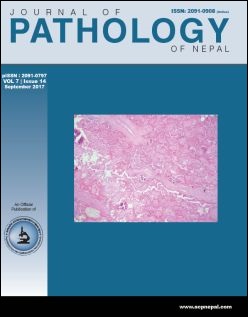Can p53 expression and staining intensity correlate with histopathological prognostic parameter and clinical staging in head and neck squamous cell carcinoma?
DOI:
https://doi.org/10.3126/jpn.v7i2.17976Keywords:
Head and Neck, p53, Immunoexpression, Intensity, Squamous Cell Carcinoma,Abstract
Background: In recent years, p53 has emerged as an important tool for not only diagnosis and predicting prognosis in head and neck squamous cell carcinoma. The aim of this study was to find the role of p53 staining intensity in determining prognosis.
Materials and Methods: Fifty histopathologically proven cases of squamous cell carcinoma of head and neck were studied. The findings of the study were analyzed particularly in reference to p53 expression and their correlation with age, sex, anatomical site, tumor size, histological grading, vascular, peri-neural, muscle invasion, lymph node metastasis and staining intensity.
Results: Immunopositivity rate of p53 was 64% with percentage positive cells varying from 5-76% with mild, moderate and strong staining intensity. A positive correlation of p53 independently was seen with oral cavity, grade, lymph node metastasis and pathological staging.
Conclusion: p53 immunoexpression is an important independent variable of prognostication.
Downloads
Downloads
Published
How to Cite
Issue
Section
License
This license enables reusers to distribute, remix, adapt, and build upon the material in any medium or format, so long as attribution is given to the creator. The license allows for commercial use.




